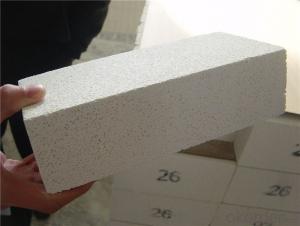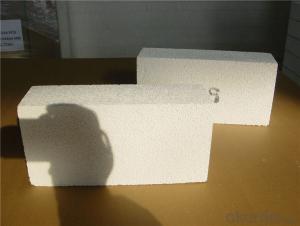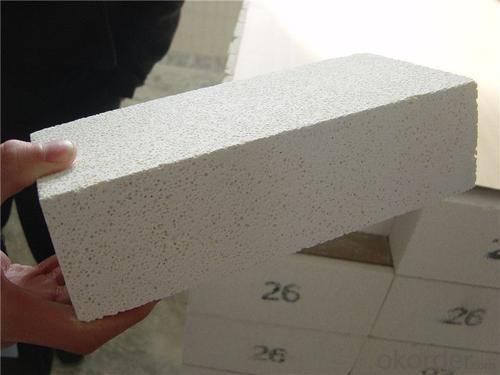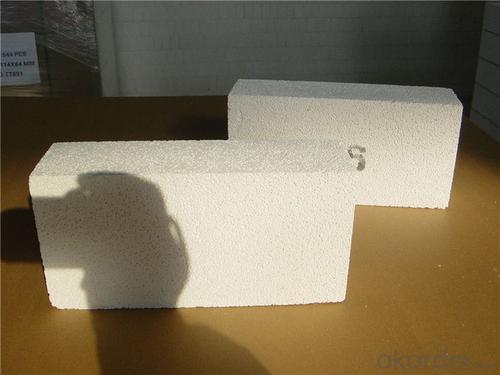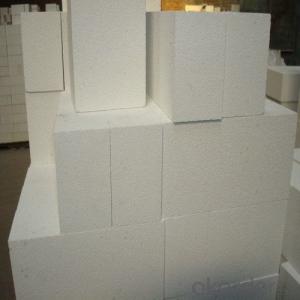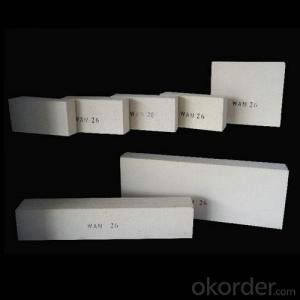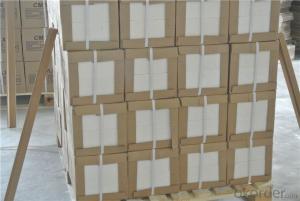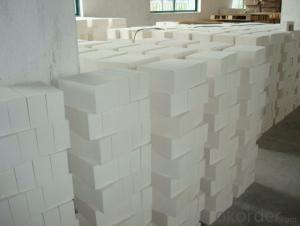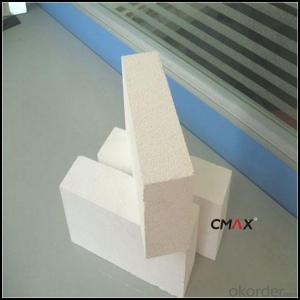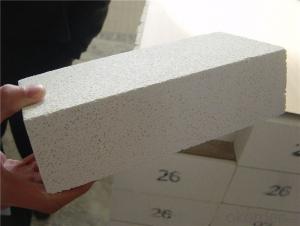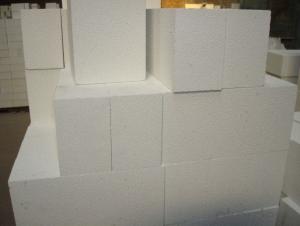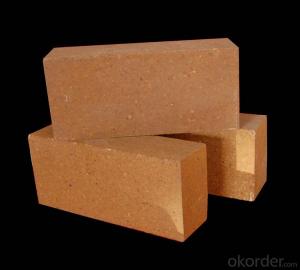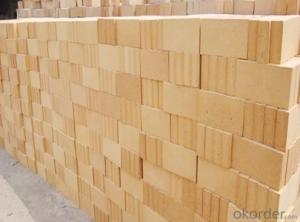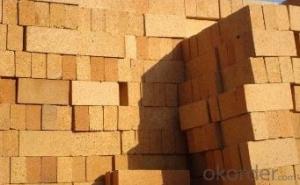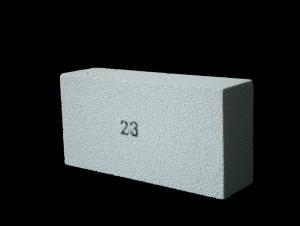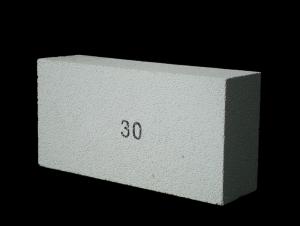Insulating Fire Brick - Standard Size Refractory Materials for Foundry & Industry
- Loading Port:
- Tianjin
- Payment Terms:
- TT OR LC
- Min Order Qty:
- 20 m.t.
- Supply Capability:
- 10000 m.t./month
OKorder Service Pledge
OKorder Financial Service
You Might Also Like
CNBM conforms strictly to the requirements of ISO 9000 quality control system during the production. MSDS is also available if you want. The thermal insulation fire clay brick meet with the requirements of ASTM & JIS standards. So please stay cool with our quality.
Application
Insulating Fire Brick are used for the lining of converter, alternating current arc furnace, direct Current arc furnace and the ladle slag line, etc.
Insulating Fire Brick Technical index
Brand Quality | JM23 | JM26 | JM28 | JM30 | JM32 | |
Bulk Density (g/cm3) | 0.52 | 0.78 | 0.88 | 1.03 | 1.25 | |
1.2 | 1.6 | 2.1 | 2.5 | 3.5 | ||
Modulus of Rupture (Mpa) | 0.9 | 1.4 | 1.6 | 2.1 | 2.1 | |
-0.5 | 1400℃ -0.4 | 1510℃ -0.5 | 1620℃ -0.9 | 1730℃ -0.9 | ||
Thermal Expansion 1100℃(%) |
0.5 |
0.7 |
0.8 |
0.9 |
1.1 | |
Thermal conductivity(W/m.k)
| 400℃ | 0.14 | 0.27 | 0.32 | 0.41 | 0.49 |
600℃ | 0.16 | 0.29 | 0.34 | 0.43 | 0.50 | |
800℃ | 0.18 | 0.31 | 0.36 | 0.44 | 0.51 | |
1000℃ | 0.20 | 0.33 | 0.38 | 0.45 | 0.53 | |
Al2O3 | 37 | 58 | 67 | 73 | 77 | |
Fe2O3 | 0.7 | 0.7 | 0.6 | 0.5 | 0.4 | |
Equipment
1 unit of Ceramic Abrasive (SG Abrasive) pilot production line
2 units of Compact grain Abrasive pilot production lines
1 unit of high-end coated abrasives (abrasive cloth) production line
2 units of Boron Carbide production lines
3 large flexible crushing and sieving lines for grit production lines
2 units of 2000KVA furnaces for Boron Carbide fusion
6 units of 5000KVA-10000KVA dumping type electric arc furnaces for Brown Fused Alumina fusion
Company Advantage
(1)Long Insulating Fire Brick manufacture history: 25 years manufacturer
(2)Advanced equipment
(3)Diversification of production standards: ISO ANSI FEPA JIS ASTM
(4)Flexible payment: T/T L/C D/P D/A
(5)Professional marketing team and after-sale service
(6)Free sample
FAQs
Q1 |
What’s the transport method? |
A1 | FCL delivery goods with wooden pallet or wooden case by sea; If LCL delivery, must with wooden case; Sometimes need open top, flat rack or bulk cargo. |
Q2 |
What’s the required payment term? |
A2 | Generally 30% TT as the prepayment, 70% TT before delivery. If need, 100% Irrevocable Letter of Credit or negotiation. |
Q3 |
Which country are our products exported to? |
A3 | Apart from entire Chinese market, the US, Russia, Japan, Korea, Australia and some Southeast Asian Nations. |
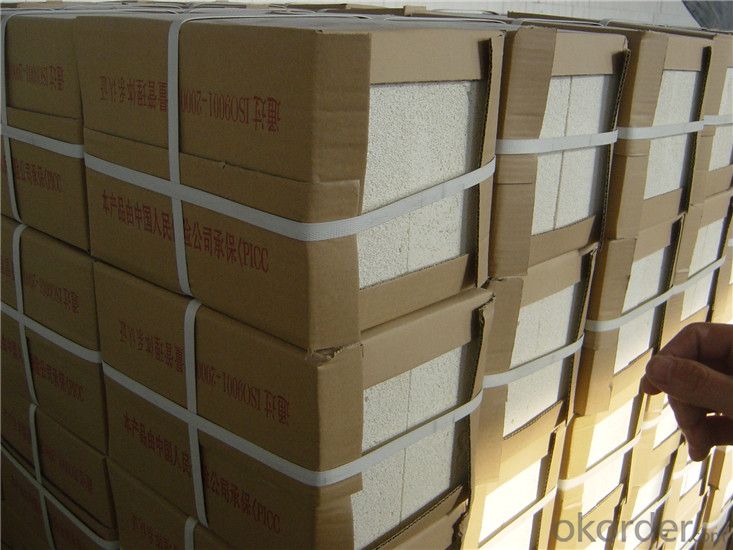
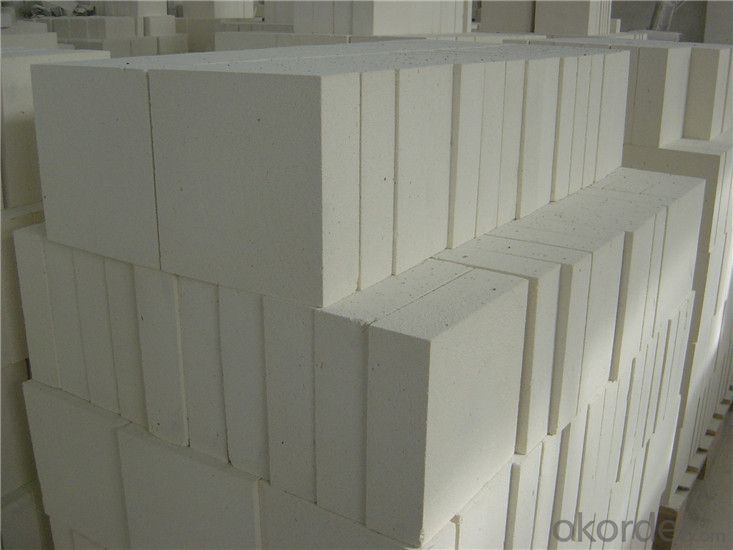
- Q: How do insulating fire bricks affect energy efficiency?
- The use of insulating fire bricks is essential for improving energy efficiency in various applications. These bricks are specifically designed to have low thermal conductivity, allowing them to minimize heat transfer effectively. By reducing the amount of heat that escapes or enters a system, insulating fire bricks help conserve energy and maintain optimal temperature levels. In industrial furnaces and kilns, insulating fire bricks serve as a barrier, preventing heat dissipation into the surrounding environment. This results in reduced energy consumption as the heat is retained within the system, enabling more efficient and cost-effective operation. Additionally, insulating fire bricks can decrease the time required for the system to reach and maintain the desired temperature, further enhancing energy efficiency. For residential and commercial buildings, insulating fire bricks are utilized in the construction of fireplaces, stoves, and chimneys. These bricks effectively trap heat within the combustion chamber, preventing it from escaping through the walls. Consequently, the heat generated by the fire is utilized more efficiently, reducing the need for additional heating sources and ultimately saving energy. Furthermore, insulating fire bricks are also used to insulate pipelines, boilers, and other equipment requiring thermal protection. By minimizing heat transfer through these components, energy losses are reduced, resulting in improved energy efficiency. In conclusion, insulating fire bricks play a significant role in enhancing energy efficiency by minimizing heat loss, maximizing heat retention, and optimizing temperature control in various applications. Their low thermal conductivity properties make them an essential component in systems where energy conservation and cost-effectiveness are critical factors to consider.
- Q: How do insulating fire bricks affect the overall fire resistance of a structure?
- Insulating fire bricks play a crucial role in enhancing the overall fire resistance of a structure. These specialized bricks are designed to withstand high temperatures and act as an effective thermal barrier. By insulating the structure, they help to reduce heat transfer and prevent the spread of fire. Insulating fire bricks possess a low thermal conductivity, which means they do not easily conduct heat. This property enables them to absorb and store heat energy, preventing it from being transmitted to other parts of the structure. As a result, the fire is contained within a specific area, minimizing the risk of spreading to adjacent areas. Furthermore, insulating fire bricks have a high melting point, making them extremely resilient to heat. This allows them to effectively withstand prolonged exposure to intense temperatures without deforming or disintegrating. By preserving their structural integrity, these bricks ensure the stability and integrity of the overall structure during a fire event. In addition to their insulation and heat resistance properties, insulating fire bricks also act as a barrier to flames and combustion gases. Their dense composition obstructs the passage of flames and smoke, preventing them from permeating through the structure. This containment helps to limit the damage caused by fire and provides valuable time for occupants to evacuate safely. Overall, the incorporation of insulating fire bricks in the construction of a structure significantly enhances its fire resistance. They provide insulation, prevent the spread of fire, maintain structural stability, and act as a barrier against flames and smoke. By reducing heat transfer and containing the fire, insulating fire bricks play a vital role in safeguarding the structure and its occupants during a fire emergency.
- Q: Are insulating fire bricks resistant to cracking under pressure?
- Yes, insulating fire bricks are designed to be highly resistant to cracking under pressure. They are specifically manufactured to withstand high temperatures and thermal shocks while maintaining their structural integrity.
- Q: Do insulating fire bricks require any special storage conditions?
- There are no specific special storage conditions necessary for insulating fire bricks. These bricks can endure high temperatures and are usually composed of materials like clay or silica that are heat-resistant. Nevertheless, it is advisable to store them in a dry and covered location to prevent moisture absorption or harm. Furthermore, it is crucial to handle these bricks cautiously to avoid breakage or cracks that could impact their insulation properties. Ultimately, as long as the bricks are stored in a dry and safeguarded setting, no particular special storage conditions are needed for insulating fire bricks.
- Q: Are insulating fire bricks suitable for use in aluminum smelting furnaces?
- Insulating fire bricks are not typically suitable for use in aluminum smelting furnaces. Aluminum smelting requires high temperatures, often exceeding 1,000 degrees Celsius, and insulating fire bricks are designed to have low thermal conductivity, meaning they are better at retaining heat rather than withstanding extreme temperatures. For aluminum smelting, refractory fire bricks or refractory castables are more appropriate. These materials have high melting points and are capable of withstanding the intense heat produced during the smelting process without losing their structural integrity. They also have good thermal shock resistance, which is important as the furnace may experience rapid temperature changes during operation. Additionally, refractory materials used in aluminum smelting furnaces should have good resistance to corrosion and chemical attack from the molten aluminum and other materials used in the process. Insulating fire bricks may not have the necessary chemical resistance, which could lead to premature degradation and failure of the furnace lining. In summary, while insulating fire bricks may be suitable for other applications that require good thermal insulation, they are generally not recommended for use in aluminum smelting furnaces. Refractory fire bricks or refractory castables are better suited for this high-temperature and chemically aggressive environment.
- Q: Do insulating fire bricks have a high resistance to spalling?
- Yes, insulating fire bricks have a high resistance to spalling. Spalling refers to the breaking off or flaking of the surface of a material, and in the case of fire bricks, it typically occurs due to high temperatures and thermal shock. Insulating fire bricks are specifically designed to withstand these extreme temperatures and thermal cycling, making them highly resistant to spalling. These bricks are made from high-quality refractory materials, such as alumina or silica, which have excellent thermal shock resistance. Additionally, they are manufactured with a low thermal conductivity, which helps to minimize heat transfer and reduce the risk of spalling. Overall, insulating fire bricks are an ideal choice for applications where high resistance to spalling is required, such as in furnaces, kilns, and other high-temperature environments.
- Q: Can insulating fire bricks be used in the construction of aluminum smelting furnaces?
- Yes, insulating fire bricks can be used in the construction of aluminum smelting furnaces. These bricks have excellent thermal insulation properties, allowing them to withstand high temperatures without transferring heat to the surrounding environment. This makes them suitable for lining the walls and floors of aluminum smelting furnaces, helping to maintain the desired temperature inside the furnace while minimizing heat loss.
- Q: Do insulating fire bricks require any special curing or firing temperature profiles?
- Yes, insulating fire bricks do require special curing and firing temperature profiles. Insulating fire bricks are made from lightweight materials such as perlite, vermiculite, or alumina silicate, which have high insulating properties. These bricks are designed to withstand high temperatures and provide excellent thermal insulation. During the manufacturing process, insulating fire bricks go through a curing process to remove any moisture content. This is typically done by gradually increasing the temperature in a controlled manner. The curing process is important to prevent any cracking or damage that could occur if the bricks were exposed to high temperatures too quickly. In terms of firing temperature profiles, insulating fire bricks require careful consideration. They are designed to be used in applications where temperatures reach up to 2800°F (1538°C). Therefore, it is crucial to follow the recommended firing temperature profiles provided by the manufacturer. The firing temperature profile typically involves a gradual increase in temperature to allow the insulating fire bricks to reach the desired maximum temperature without causing any thermal shock or damage. This slow heating process ensures that the bricks are properly cured and can withstand the extreme temperatures they will be exposed to during use. It is important to note that the specific curing and firing temperature profiles may vary depending on the type and composition of the insulating fire bricks. Therefore, it is essential to refer to the manufacturer's guidelines and recommendations to ensure the proper curing and firing process for the specific type of insulating fire bricks being used.
- Q: What is the maximum temperature that insulating fire bricks can withstand?
- Insulating fire bricks can withstand temperatures up to 3000°F (1650°C).
- Q: Can insulating fire bricks be used in hydrogen furnaces?
- Insulating fire bricks possess the capability to be utilized in hydrogen furnaces, although it is imperative to acknowledge that not all variants of insulating fire bricks are suitable for this particular purpose. Due to the highly reactive nature of hydrogen gas, certain materials can deteriorate or react, thereby giving rise to concerns regarding safety and potential harm to the furnace. When making a selection of insulating fire bricks for employment in hydrogen furnaces, it becomes crucial to opt for bricks that are explicitly designed for environments characterized by high temperatures and corrosive conditions. These bricks ought to be constructed from materials that exhibit resistance against hydrogen embrittlement and possess a low reactivity with hydrogen. Silicon carbide (SiC) and alumina-silica (Al2O3-SiO2) are frequently utilized materials for insulating fire bricks within hydrogen furnaces. These materials boast remarkable resistance to elevated temperatures and remain chemically stable when exposed to hydrogen. Moreover, it is of utmost importance to take into account the density and porosity of the insulating fire bricks. For hydrogen furnaces, it is preferable to employ bricks with low density and high porosity, as they offer enhanced thermal insulation and diminish the likelihood of hydrogen leakage. In conclusion, while insulating fire bricks can be employed in hydrogen furnaces, it is crucial to meticulously select the appropriate type of bricks that are specifically engineered for high-temperature and corrosive environments, and exhibit commendable resistance against hydrogen embrittlement and reactivity. Seeking consultation from specialists in the field and adhering to the guidelines provided by the manufacturer is highly recommended to ensure the safe and efficient operation of the hydrogen furnace.
Send your message to us
Insulating Fire Brick - Standard Size Refractory Materials for Foundry & Industry
- Loading Port:
- Tianjin
- Payment Terms:
- TT OR LC
- Min Order Qty:
- 20 m.t.
- Supply Capability:
- 10000 m.t./month
OKorder Service Pledge
OKorder Financial Service
Similar products
Hot products
Hot Searches
Related keywords
